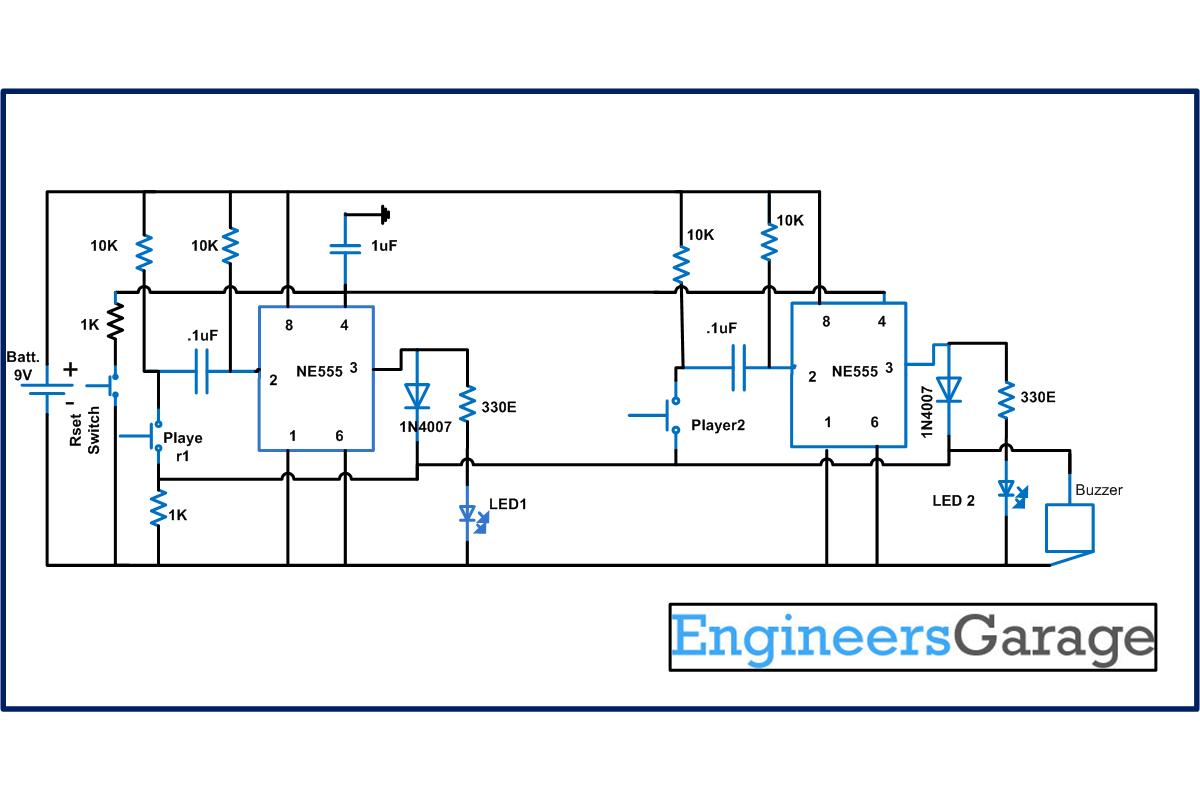Quiz games are becoming very popular these days. The main concept behind these games is the use of fastest finger first indicators which are used to test the reaction time of the contestants. When the players press the button then the designated player’s number is displayed with the use of audio-visual alarm. The project here has a circuit that can be used for 2 players or teams only. It can be used to identify which of the two has first pressed the button and locks out the other on. The project is made up of two 555 timers which are sometimes known as Schmitt trigger as they work in bistable state i.e. produce either a low or a high output. In this circuit when the trigger input is low the output of the circuit becomes high and when the reset input is low the output also becomes low.e.
Both the contestants have a trigger push switch and a corresponding LED. Whenever any of the contestants press the switch, it triggers the bistable output (pin 3), the LED lights up and the beeper sounds due to which the other players switch stops working and it becomes easy to find that which switch was first pressed. In this a diode is used to link the output with the trigger line. Now the third switch comes into picture which is used to reset the circuit and it is with the quiz master. As soon as that switch is pressed the beeper gets cancelled and the LED turns off so that the circuit becomes ready for the next question.
Both the reset inputs are connected together and operated by a single reset switch. The switches for the contestants are connected to the bistable trigger so as to prevent quiz master from resetting the circuit until the trigger switches are released by the contestants. This bistable switch (pin 2) passes through a 0.1 µF capacitor so that only the primary pressing of the switch triggers the timer and then even if the switch is closed it has no effect. This is also known as edge triggering.
This circuit is designed for two teams only and if we want to increase the number of teams it is possible by adding the number of 555 timers.
Circuit Diagrams
Project Components
Filed Under: 555 Timers, Electronic Projects



Questions related to this article?
👉Ask and discuss on EDAboard.com and Electro-Tech-Online.com forums.
Tell Us What You Think!!
You must be logged in to post a comment.